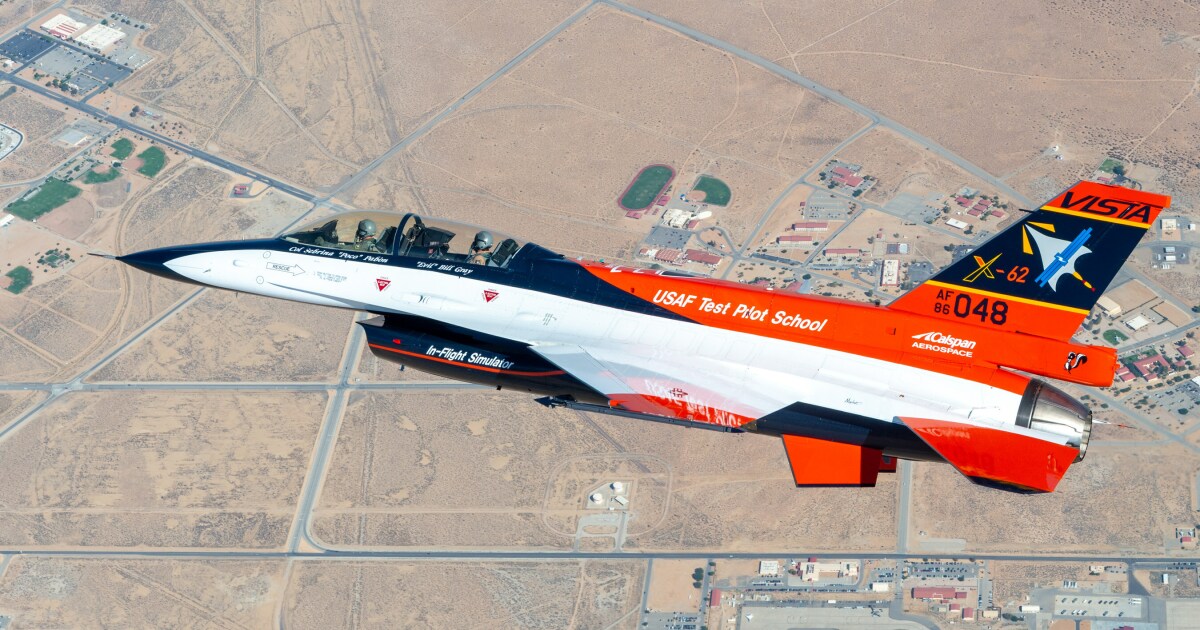[ad_1]

A unique Lockheed Martin fighter jet trainer called the VISTA X-62A has become the first tactical aircraft to be controlled by artificial intelligence, taking to the air for over 17 hours during a test flight from Edwards Air Force Base in California in December 2021.
One of the frustrating problems with modern combat aircraft is how long it takes to develop them. Where the Supermarine Spitfire of WWII legend took only three years to go into service, the F-35 Lightning II took 20 years and the first ones to be delivered are already obsolete despite the order backlogs.
There’s also the problem of training pilots to fly high-performance aircraft in different variations. Today’s air forces are much smaller than they were in the past due to the astronomical costs of building and maintaining fighters, so it’s hard to free up enough of these flying thoroughbreds for training purposes.
With the development of artificial intelligence, engineers now have a tool that can kill two birds with one stone. Developed by Lockheed Martin’s Skunk Works classified research facility in cooperation with Calspan Corporation, the Variable In-flight Simulation Test Aircraft (VISTA) is being used at the US Air Force Test Pilot School at Edwards to mimic the flight characteristics of various aircraft. It is also being able to operate autonomously.
The VISTA X-62A is a modified F-16D Block 30 Peace Marble Il aircraft that has been fitted with Block 40 avionics. Originally designated as NF-16D, it was declared a US national asset and was renamed the X-62A in June 2021.
Though it may look like an F-16 with gaudy livery, the VISTA X-62A hides some highly advanced capabilities under its stressed aluminum alloy skin. Chief among these is the VISTA Simulation System (VSS) developed by Calspan, and Lockheed Martin’s Model Following Algorithm (MFA) and System for Autonomous Control of the Simulation (SACS).
The latter two, integrated together, give the aircraft new capabilities that turn it into a flying testbed for autonomy and AI. The SACS system features the Skunk Works’ Enterprise-wide Open Systems Architecture (E-OSA) that runs the Enterprise Mission Computer version 2 (EMC2), also known as the Einstein Box, which is designed to allow older systems to link together for sharing of data across all domains. The aircraft also has advanced sensors and Getac tablet displays in both the forward and aft sections of the cockpit.
According to Lockheed, the VISTA X-62A has not only improved capabilities, it can also handle quick changes to its software for rapid prototyping to speed development as well as increasing the number of test flights.
The VISTA X-62A is currently undergoing inspections, after which it will resume flying.
“VISTA will allow us to parallelize the development and test of cutting-edge artificial intelligence techniques with new uncrewed vehicle designs,” said Dr. M. Christopher Cotting, US. Air Force Test Pilot School director of research. “This approach, combined with focused testing on new vehicle systems as they are produced, will rapidly mature autonomy for uncrewed platforms and allow us to deliver tactically relevant capability to our war fighter.”
Source: Lockheed Martin
[ad_2]
Source link
